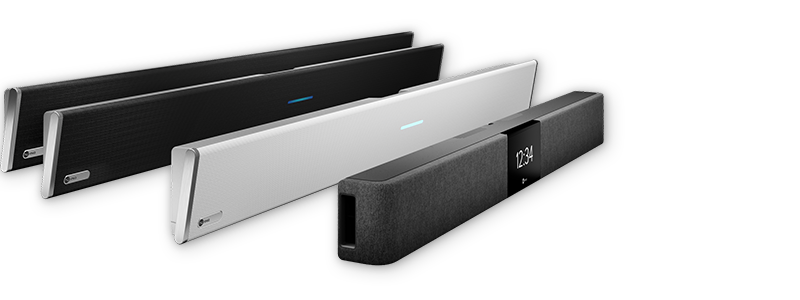Zoom fatigue – it’s real for me

Posted by Nancy Knowlton | President and CEO of Nureva Inc.
After months of working remotely, we have all experienced a lot. Early optimism about being able to handle anything for a short period has given way to the reality that, for many of us, working from home is going to be a longer-term proposition.
As both the CEO of a company that made the WFH shift and an individual who’s been working from home, I’ve been very interested in the impact of the new way of working on all aspects of our organization. The feelings of our staff, the impact on productivity and team interactions are all on the table for observation and discussion.
My WFH experience
Not too long after I began working from home, I noticed that I felt more tired than normal. I thought that was odd, given that I no longer had the long commute to and from work, something that had consumed almost two hours every day.
In fact, when we started working from home, I had wondered how I would spend the time that I would now save from not commuting. For someone who never feels I have enough time to do everything I would like, saved time was a delightful prospect to consider.
Somehow that extra time never materialized. Almost immediately, I started work earlier and ended later. The boundaries between work and home have always been a little flexible for me. While working from home, they evaporated.
I soon learned that I needed to instill some personal discipline around work hours. I have never been one to clock 40 hours and stop, but I didn’t want to revert to old habits and escalate to 70 hours and beyond.
Meeting exhaustion
Still, the feelings of being tired persisted. Then, as I was trying to book a meeting one day, it hit me.
I was booked almost full time for meetings.
I was used to having a lot of meetings, but looking at my calendar showed some days with virtually no free time. No time for ad hoc, emerging matters. No time for connecting with someone spontaneously. No time to just think.
I noticed that most of my meetings were booked for an hour or more. There wasn’t anything unusual in that – many of the matters that I need to reflect on require deep consideration and that takes time. But it was adding up to some very packed days.
I started paying attention to how I felt during meetings, and I noticed that the tiredness settled in as the day wore on. About the same time, I started to see articles about Zoom fatigue and recognized my own symptoms. Great – it really was a thing, and I wasn’t losing it.
What I was feeling may be commonly called Zoom fatigue, but it really applies to all videoconferencing platforms. And given the many Google™ searches that are done about it every day, it’s affecting a lot of us.
Strategies for beating Zoom fatigue
Once I knew the source of my struggles, I felt compelled to figure out what to do about it. After a few experiments, here are five strategies I came up with.
1. Be intentional about your focus – Early on, I found that I was scanning the mini-images of the participants to check in on their reactions throughout the meeting. In a face-to-face meeting, I wouldn’t regularly scan meeting participants like this, so it was a curious revelation that I was doing this in a virtual meeting. Now, I focus on the conversation and materials that are being shared. I find that my focus is sharper and I’m absorbing the information that is of greatest importance.
2. Turn off the video – In the majority of my meetings, once we have shared our greetings, I turn off my video as a courtesy to fellow attendees. They don’t have the distraction of my video when they don’t need it. When I am presenting or sharing material, I turn it back on.
3. Choose short bursts of interaction – While I continue to have meetings that take one to two hours, I reach out to more people on an impromptu basis for short 10-minute meetings. This more closely replicates the in-office experience where these discussions would be held face-to-face to quickly deal with an item and move on. It just feels more normal.
4. Stand up and move – I think that early on, part of the reason for feeling so fatigued was that I was confined to my chair for extended periods. In the office, I often stood for an hour-long meeting. I don’t have the same sit-stand desk at home, nor do I have high meeting tables. I also don’t move from one meeting room to another. But now, I stand for some part of many meetings. I also take frequent walks to the kitchen and back.
5. Be prepared – It sounds like a simple thing, but being prepared for a discussion means taking the time to read materials and consider them. I don’t want to be the person who pushes a meeting to the limit for lack of preparation. It’s a courtesy to my coworkers and sometimes shortens a meeting duration.
In-person or virtual?
In my perfect world, we would go back to the office tomorrow and make the bulk of our meetings happen face to face. But that’s not going to happen. As long as we have team members regularly working remotely, we need to keep trying to make WFH as natural and effective as we can.
I am learning every day how to make WFH work for me. I hope these strategies that have helped me can aid you in your fight against Zoom fatigue.
Audio built for the new reality
Are you upgrading your meeting rooms for better remote meetings? Check out Nureva® audio. Our systems are quick to install. They automatically adapt to changing room configurations. And with thousands of virtual microphones, they offer true full-room coverage – every inch, every space.


Posted by
Nancy Knowlton | President and CEO of Nureva Inc.



















